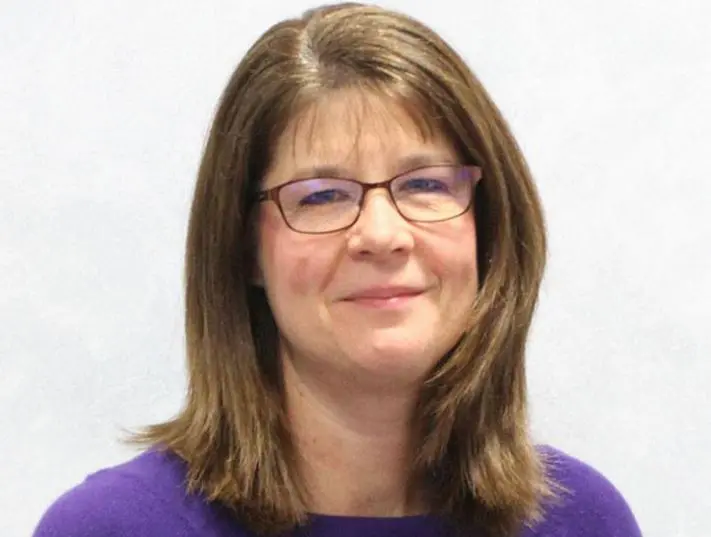11th September 2018
A guest blog by Dr Karen Whittaker, Reader in Child and Family Health, School of Nursing, University of Central Lancashire, and Trustee of the Institute, reflecting on 30 years in health visiting.

Dr Karen Whittaker, Reader in Child and Family Health, School of Nursing, University of Central Lancashire
In recent months I have received an increasing number of invitations to retirement lunches and farewell events for local health visitors. Colleagues who will be genuinely missed for their wisdom and experience of knowing the: ‘what, when and how’ to deliver health visiting.
Change in this way invokes reflection. For myself, this September marks a 30-year career in health visiting since starting out as a fourth year student at the University of Manchester, commencing fieldwork practice at Langworthy Clinic, Salford. Like many features of the NHS, health visiting service provision has altered; though many of my retiring colleagues question whether it has altered for the better or for reasons underpinned by sound evidence.
As a student, I was allocated to a fieldwork teacher (FWT) who, whilst managing a caseload, provided me with one-to-one teaching and guidance in relationship building with families. This caseload was made up of families with pre-school aged children and older people eligible for well-health screening. Those included on the caseload all lived in a defined geographical area and most were registered at one of two General Practitioner (GP) surgeries, one of which was a single-handed practice. The caseload boundaries, created by GP allocation and geography, meant that the FWT health visitor worked regularly with the GPs, social workers, family and women’s centre staff and housing officers, also working with residents of the specified community. Most caseload contacts were made through home visits and additional contact through delivery of well-baby clinics at GP surgeries (specific to those registered at the surgery) and community child health clinics (open to any child regardless of GP registration). Whilst the FWT health visitor took sole responsibility for delivery of the well-baby clinic, she shared the cover and delivery of the non-GP affiliated child health clinic with the 5 other health visitors in the Langworthy team, who each had their own caseload of families for which they were responsible.
Fast forward 30 years. Although no longer employed as a practising health visitor, my academic and research role enables me to regularly work alongside health visitor colleagues and, therefore, witness and learn about current service delivery situations. During my more recent practice visits as part of the E-SEE study (See: e-see-trial.org/), I’ve learned of the operation of alternative team and caseload models. This includes health visitors working within integrated teams with early years providers and with various caseload models, reflecting the team/caseload arrangements described by Cowley et al. (2018).
A short iHV survey, completed by members in April this year, was intended to provide a snapshot of current health visitor team and caseload arrangements across the UK. Early analysis shows that health visitors are working with different types of employers, teams and caseloads. Health visitor employment is not necessarily limited to the NHS – teams vary with different combinations of skill-mix in operation and caseloads appear to be organised in one of four ways. Broadly, caseloads are described as either: individually managed; corporate and shared with team colleagues; a combined model bringing together features of the individual and corporate approaches; and the fourth, targeted where the caseload includes families meeting specified criteria or particular need thresholds. How each of these caseload arrangements support continuity in relationships with families, and also GPs, is unknown, though given how much continuity impacts on patient experience (Freeman and Hughes 2010) it is certainly something that needs attention. What we do know from a previous iHV survey in 2017 is that contact between health visitors and GPs can be very variable, and for some, sadly, it is a rare feature of practice (Bryar el al. 2017).
Change, of course, is inevitable over time. But, in doing so, there is a need to keep in mind valuable aspects of practice, such as systems that enable continuity and quality care through relationship building with clients/families and colleagues. Whether sufficient relationship building is supported by the newer team arrangements and caseload models for service provision, is not fully understood. The answer to this is to research the different systems of care – then at least there will be a better understanding of which changes can also support what works best for families. Otherwise we risk making ‘stabs in the dark’ and, moving on from so much, we fail to remember what was good and valuable in the old.
Dr Karen Whittaker, Reader in Child and Family Health, School of Nursing, University of Central Lancashire.
E-mail: [email protected]
Bryer, R.M., Cowley, S.A., Adams, C.M., Kendall, S. Mathers, N. (2017) Editorials. Health visiting in primary care in England: a crisis waiting to happen. British Journal of General Practice. March, 67 (656): 102-103. DOI: https://doi.org/10.3399/bjgp17X689449
Cowley, S., Malone, M., Whittaker, K., Donetto, S., Grigulis, A., Maben, J. (2018) What makes health visiting successful – or not? 2 The service journey. Journal of Health Visiting, 6(1): 404-412.
Freeman, G., Hughes, J. (2010) Continuity of care and the patient experience. The King’s Fund. London. Available at: https://www.kingsfund.org.uk/projects/gp-inquiry/continuity-of-care.

